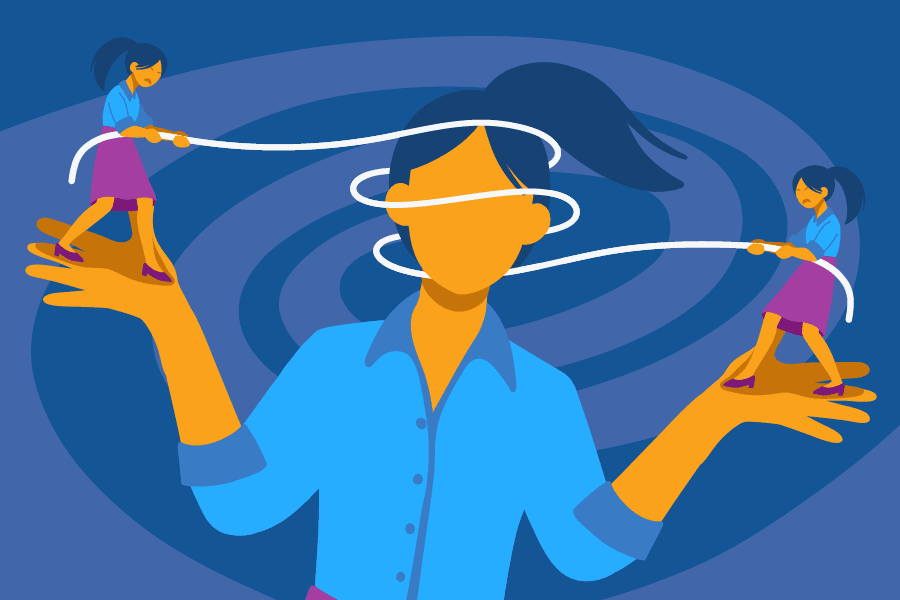Eating Disorders & Substance Abuse
Many people incorrectly view Eating Disorders (ED’s) as a choice or decision made by the individual suffering. There are many commonly held misconceptions regarding how and why these diseases occur and how they should be treated.
The root of an eating disorder is surprisingly rarely just about eating, and in order for successful treatment, an understanding of what these disorders are and how they occur is necessary.
Types of Eating Disorders
There are seven different types of eating disorders recognized by the American Psychiatric Association. Overall they affect tens of millions of Americans with a total lifetime prevalence rate of about 4.0%. Furthermore, women have a two and half-times higher likelihood of developing one than men.
The most frequently occurring disorders and their defining symptoms are discussed below.
Anorexia Nervosa
Anorexia Nervosa, or simply Anorexia, is defined by a restriction of food so that the person is not getting the appropriate amount of calories and nutrients to maintain a normal body weight. Overtime the restriction of food leads to a lower than average body weight.
Even though the person is below a normal weight, there is a great deal of fear or anxiety about gaining weight or becoming fat. A person will actively work to stop any potential weight gain. Finally, those with Anorexia show a skewed sense of body image; there is a warping of reality with how underweight they actually are.
Body weight and shape play an abnormally large role in how they feel about themselves.
Bulimia Nervosa
Bulimia Nervosa, or more commonly Bulimia, is characterized by an individual having recurrent episodes of binging, which are followed by purges. The individual will eat a huge amount of food in a short period of time with an apparent total lack of control. The binge is then followed by a purge; an attempt to undo the overeating.
A purge can include inducing vomiting, misusing laxatives, diuretics or other types of medication, excessive exercise or fasting. As with Anorexia, the individual’s self image is overly based upon his/her body weight and shape.
Binge Eating Disorder
Binge Eating Disorder is signified by binging episodes, which are similar to Bulimia where an individual eats a large amount without restraint in a short amount of time. Furthermore, the individual will often eat much faster than normal and will do it alone due to embarrassment about the behavior.
These binges are not due to any physical hunger and the person will eat far beyond the physiological sensation of being full. Intense feelings of distress, self-hatred, disgust, guilt and depression can all accompany a binge. Unlike Bulimia, with Binge Eating there is no compensatory behavior that follows the binge.
What Causes Eating Disorders?
While there is no definitive cause of an eating disorder, there are strong indicators of what is connected to their development. As already stated, eating disorders disproportionately affect women and most present around early adolescence to young adulthood (National Association of Anorexia Nervosa and Associated Disorders 10-year study, 2000).
While environmental factors such as lifestyle, stress, and social group, are most often blamed for being at fault in the development of a disorder, they are not the only deciding factor and their significance can be overplayed. Genetics and overall mental health seem to play a much larger part in whether an eating disorder may develop or not.

Who is at Risk for Eating Disorders?
One of the leading indicators for women in development of an eating disorder is the presence of another mental illness.
In a study that reviewed research of eating disorders and co-occurring mental illness, it was found that individuals who suffer from depression, anxiety and/or substance abuse have anywhere from 20%-75% higher likelihood of being diagnosed with an eating disorder (T. Peralstein, Eating Disorder and Comorbidity).
There was also an increased likelihood for those that had personality disorders, obsessive compulsive disorder or had a history of sexual assault. While these realities can be scary, they also help us understand how mental health can affect the individual on many levels.
Eating Disorders Co-occurring with Substance Abuse
Eating disorders and substance use have a particularly storied relationship with the possibility of a substance abuse problem arising before, during or after the eating disorder. Substance may be used as both an escape from the disorder or a way to further the disordered behavior. As a coping mechanism, drug or alcohol can allow the individual to avoid the guilt, anxiety or sadness that accompanies them constantly.
Common Substances Used
Many times, substances are used as a means to assist with weight control. Alcohol, prescription medication, illicit drugs and over the counter medication are all abused in an attempt to maintain a low weight or suppress appetites.
- Alcohol – Common within Eating Disorder populations and is sometimes used as both a means to purge and escape emotions. The binge drinking behavior can also mirror the bingeing behavior of Bulimia; drinking without limit or control, which is then followed by feelings of guilt or regret. Finding an alcohol treatment center for teens may be needing as part of overall recovery.
- Stimulants – Like those used to treat ADHD or Attention Deficit/Hyperactivity Disorder, are appetite suppressants and are often readily available to teenagers. Cocaine use is also common because of its appetite suppressing properties.
- Laxatives – Those who use laxatives use them to trigger vomiting or bowel movements. Some may take these after consuming a large amount of food.
- Diet Pills – These pills are supposed to help weight loss or decrease appetite. They are considered dangerous because, in most cases, there is no proof that they work or are safe.
All can be used as a way to further the disordered behaviors. These behaviors may require a specific addiction treatment facility for adolescents with eating disorders.
Eating disorders and substance use have a particularly storied relationship with the possibility of a substance abuse problem arising before, during or after the eating disorder. Substance may be used as both an escape from the disorder or a way to further the disordered behavior.
As a coping mechanism, drug or alcohol can allow the individual to avoid the guilt, anxiety or sadness that accompanies them constantly.
Eating Disorder Treatment Options
It is important to do away with the concept of eating disorders as a weight loss tool or a bad habit, and to handle their treatment with the same delicacy and seriousness that the illness itself presents. If you suspect your child of struggling with an eating disorder or substance abuse it is important to seek out experienced and trained clinical professionals.
Eating disorders can put someone at a much higher risk for a co-occurring illness. Getting help can reduce that potential. The sooner an individual seeks treatment that is tailored to his or her needs the better.


Online Treatment Programs
Our virtual IOP program offers the same programming that we offer in person, all online – this is ideal for those who live too far to drive to an addiction center, have transportation issues, or have health concerns that make in-person treatment challenging.




